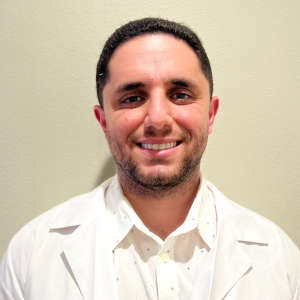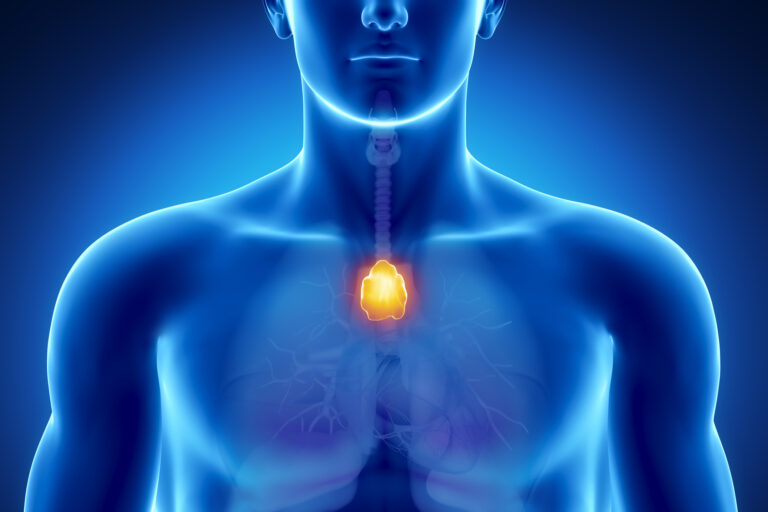
Not everyone with myasthenia gravis (MG) develops a myasthenic crisis. However, when it occurs, it can be life-threatening. This article discusses the symptoms, causes, precipitating factors, diagnosis, and treatment of myasthenic crises.
Speak to a Specialist About Copay Assistance
Myasthenia gravis is an autoimmune problem that causes muscle weakness throughout your body. Myasthenic crisis (MC) is when your breathing muscles become very weak, often requiring a breathing machine (ventilator) to help you breathe. Myasthenic crisis is the most severe complication of myasthenia gravis. MC can also weaken the muscles you use to swallow [1]. This means you might need to be fed through another method, like a nasogastric tube or parenteral nutrition. MC affects 15% to 20% of people with MG and typically occurs during the first few years following an MG diagnosis. Nearly 1 in 3 MC survivors may experience another episode [2].
What Causes a Myasthenic Crisis?
In half of the cases, the exact cause is unclear.
Respiratory infections are a common trigger. Other precipitating factors can include [3]:
- Physical or emotional stressors
- Skipping your myasthenia gravis medication
- Tapering off drugs that regulate your immune function
- Medications like antibiotics, antiseizure drugs, steroids, or antiarrhythmic agents
- Pregnancy
- Childbirth
- Premenstrual syndrome (PMS)
- Sleep deprivation
- Pain
- Surgery
- Thyroid disease
- A tumor that develops in your thymus
- Environmental factors like extremely hot or cold weather
Symptoms: Things To Look Out For
Though called a “crisis,” a myasthenic crisis typically develops slowly, and a sudden episode is rare. Call your provider immediately if you have the symptoms suggestive of an MC. If you can’t get a hold of your provider, it’s recommended to go to an emergency room to get tested.
Symptoms of MC include:
- Shallow breathing
- Difficulty breathing/speaking
- Difficulty swallowing/chewing
- Weakness of your jaw or tongue
- Nasal tone
Diagnosis
 When you visit your provider for a possible crisis, they will first perform a physical exam and review your medical history. Then, they will give you tests to rule out other heart and lung problems that can cause similar symptoms. The tests can include:
When you visit your provider for a possible crisis, they will first perform a physical exam and review your medical history. Then, they will give you tests to rule out other heart and lung problems that can cause similar symptoms. The tests can include:
- Blood gases, which help determine the amount of oxygen and carbon dioxide in your blood.
- Chest X-rays, which provide visualizations of your lungs and heart, allowing your doctor to identify signs of an infection.
- CT scans, which help your doctor check your lungs, heart, and blood vessels.
- MRIs, which are generally used to check if you have an enlarged thymus.
- Pulmonary function tests (PFT), which are used to measure how much air you inhale and exhale over a specific amount of time.
Myasthenic Crisis Treatment
A myasthenic crisis is a medical emergency that needs treatment at a hospital.
Treatment aims to strengthen your breathing muscles and treat the cause. You’ll also be started on appropriate medication to prevent further complications.
Breathing support
Depending on how severe your breathing difficulty is, your provider may insert a tube into your windpipe (intubation) to make it easier to breathe. The tube, which is connected to a ventilator, helps you breathe in and out more easily. Intubation can last 2 weeks or longer, depending on how your breathing and muscle strength improve.
Alternatively, a bilevel positive airway pressure (BiPAP) device may be used. BiPAP is a type of ventilator that uses a face mask to help air move in and out of your lungs.
Medications and therapies
IVIG or plasmapheresis (plasma exchange, or PE) is often considered as the first-line therapy. Both IVIG and PE are highly effective, producing significant improvements in approximately 70% of all cases.
Moreover, your provider may give you medicines to suppress your immune system and improve muscle strength. You may also need IV fluids to prevent low blood pressure.
Can IVIG help? | Free IVIG Treatment Info
Prognosis
Deaths due to MC have decreased dramatically in the last few decades, thanks to effective treatments like IVIG and plasmapheresis. The death rate in the US is below 5%, and MC is unlikely to affect the long-term prognosis of myasthenia gravis [2].
Tips to Prevent a Myasthenic Crisis
The following steps can lower the risk of having a myasthenic crisis:
- Take your myasthenia gravis medications as directed.
- Take your medications about 30 minutes before meals to keep food from getting into your airways.
- Eat a nutritious diet for optimal body weight and muscle strength.
- Avoid direct contact with people who have respiratory infections like a cold or flu.
- Get enough daily sleep.
- Manage stress effectively.
Myasthenic Crisis: FAQs
What is the difference between a myasthenic crisis and a cholinergic crisis?
Myasthenic crisis is a complication of myasthenia gravis. It occurs when your breathing muscles become very weak. On the other hand, a cholinergic crisis happens when you take a high dose of your myasthenia gravis medicines.
What is a clinical feature of a myasthenic crisis?
Difficult or labored breathing is the most prominent clinical feature.
Myasthenic crisis vs myasthenia gravis flares: Are they the same?
Myasthenia gravis flares and a myasthenic crisis are different. While the flares usually cause double vision and unsteadiness, a myasthenic crisis primarily causes breathing difficulties.
REFERENCES:
- Nelke, C., Stascheit, F., Eckert, C. et al. Independent risk factors for myasthenic crisis and disease exacerbation in a retrospective cohort of myasthenia gravis patients. J Neuroinflammation 19, 89 (2022). https://doi.org/10.1186/s12974-022-02448-4
- Claytor B, Cho S-M, Li Y. Myasthenic crisis. Muscle & Nerve. 2023; 68(1): 8-19. doi:10.1002/mus.27832
- Wendell, Linda C, and Joshua M Levine. “Myasthenic crisis.” The Neurohospitalist vol. 1,1 (2011): 16-22. doi:10.1177/1941875210382918












